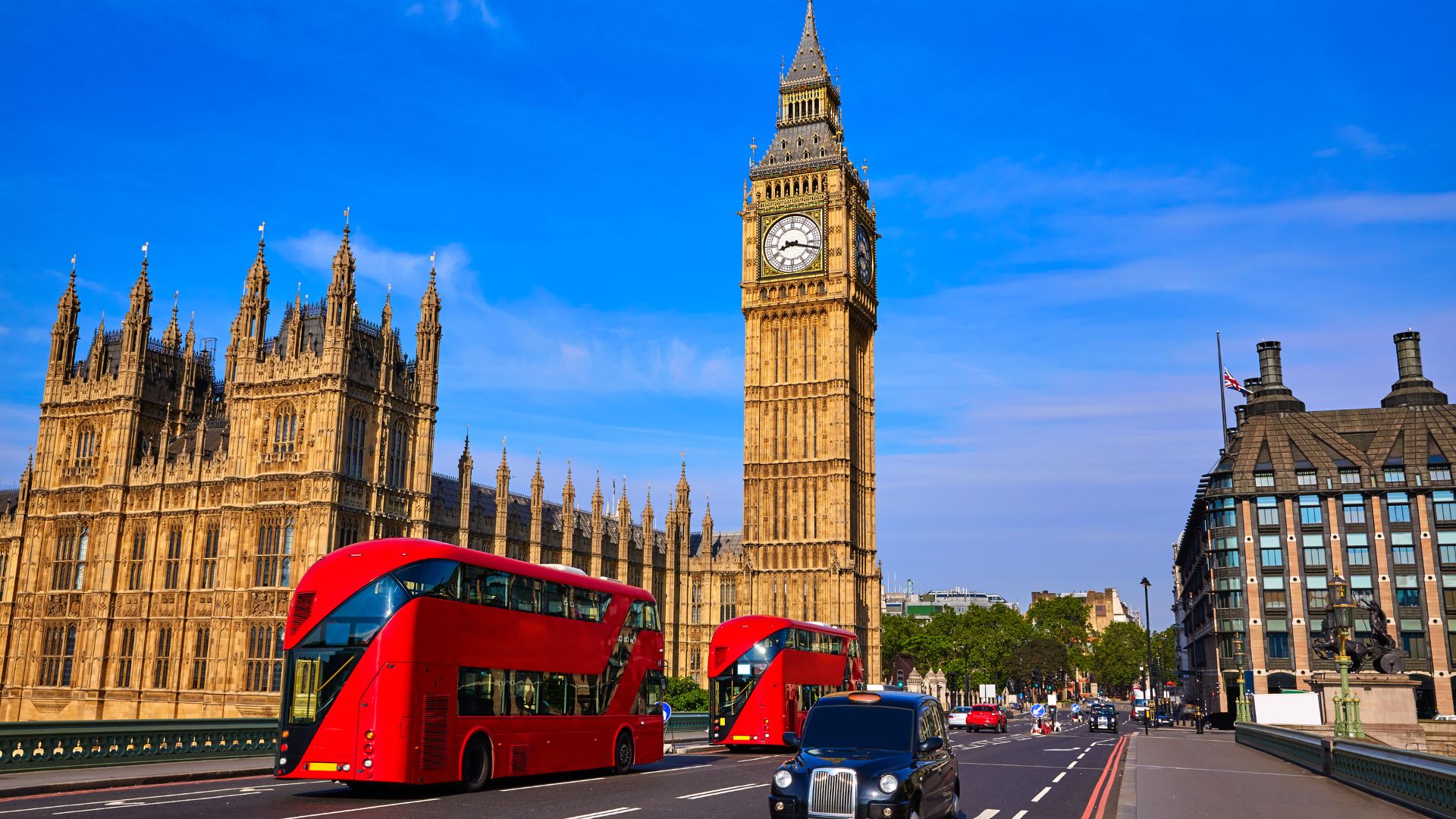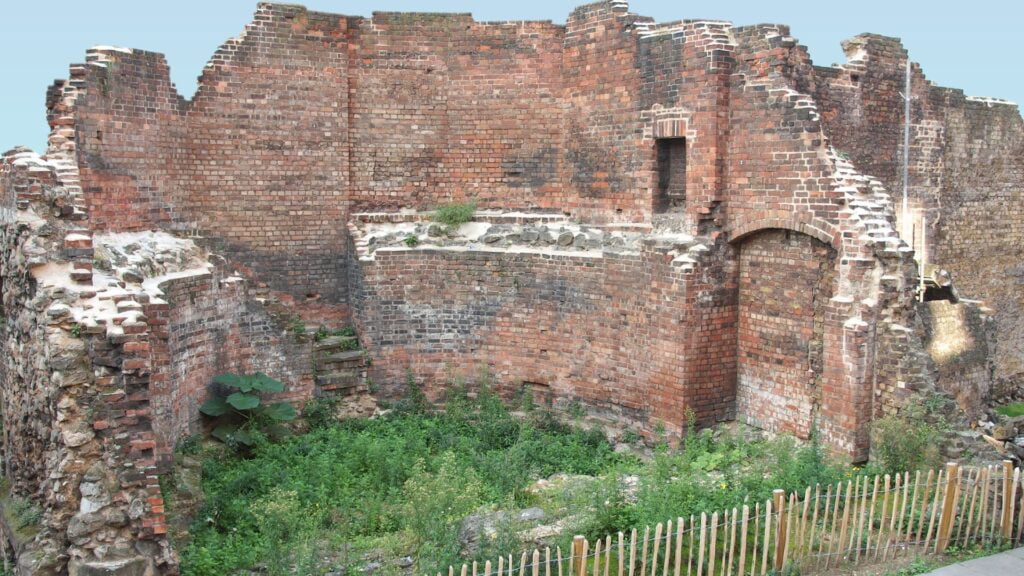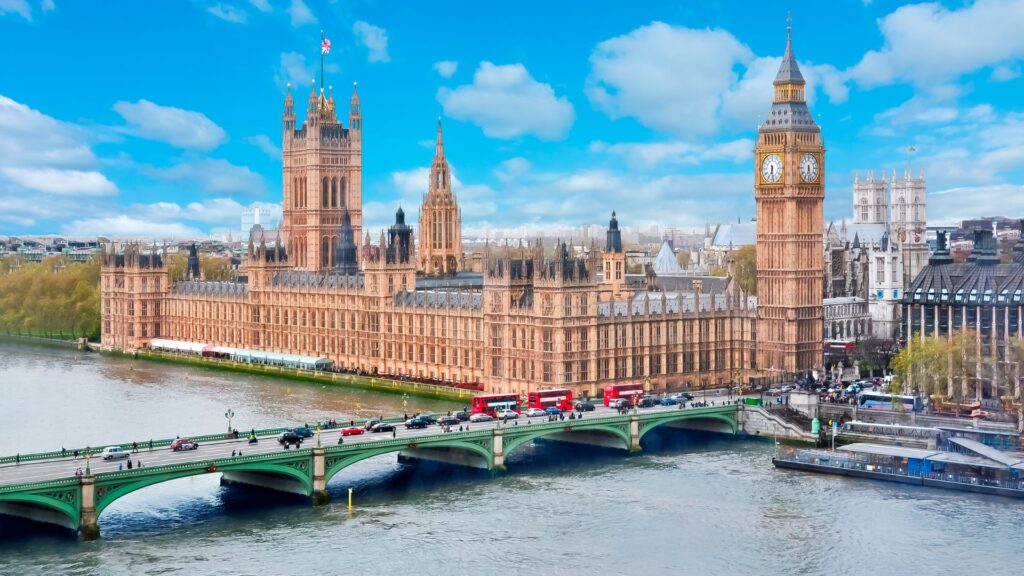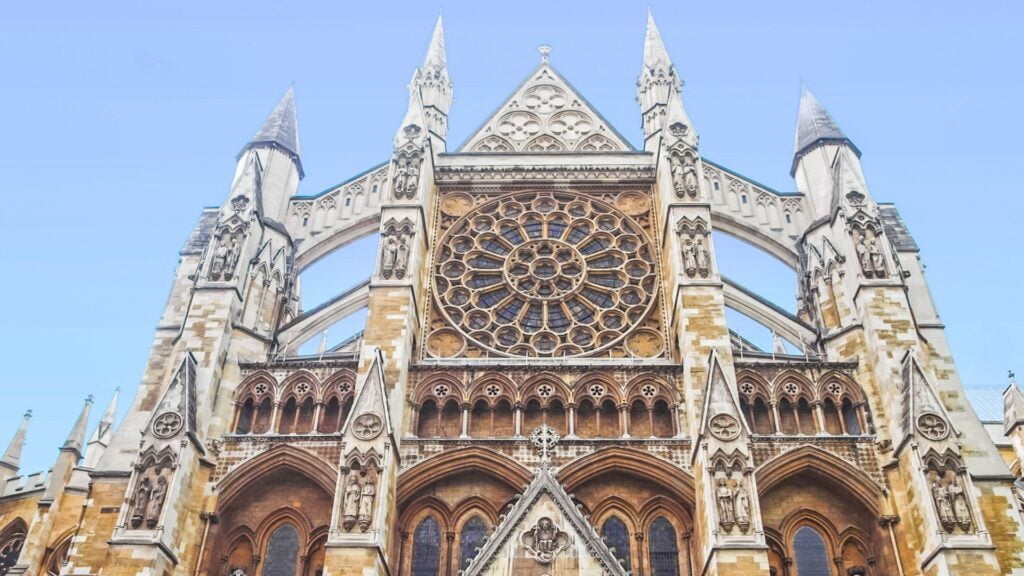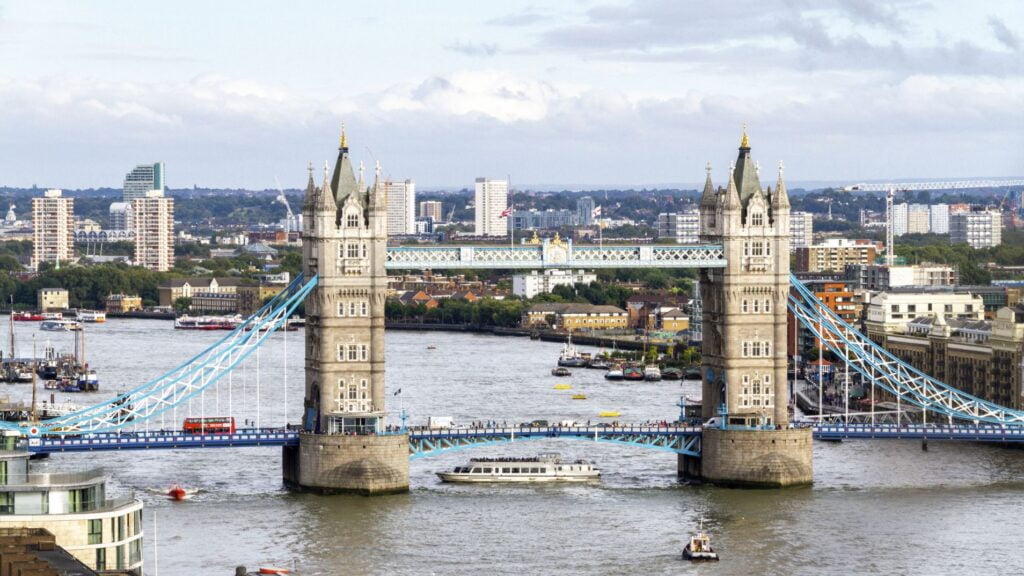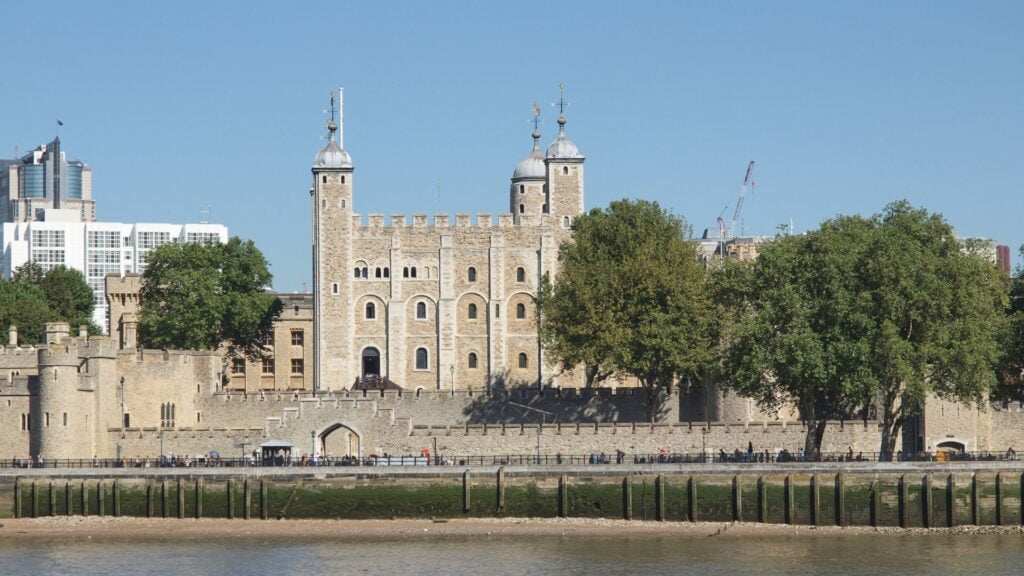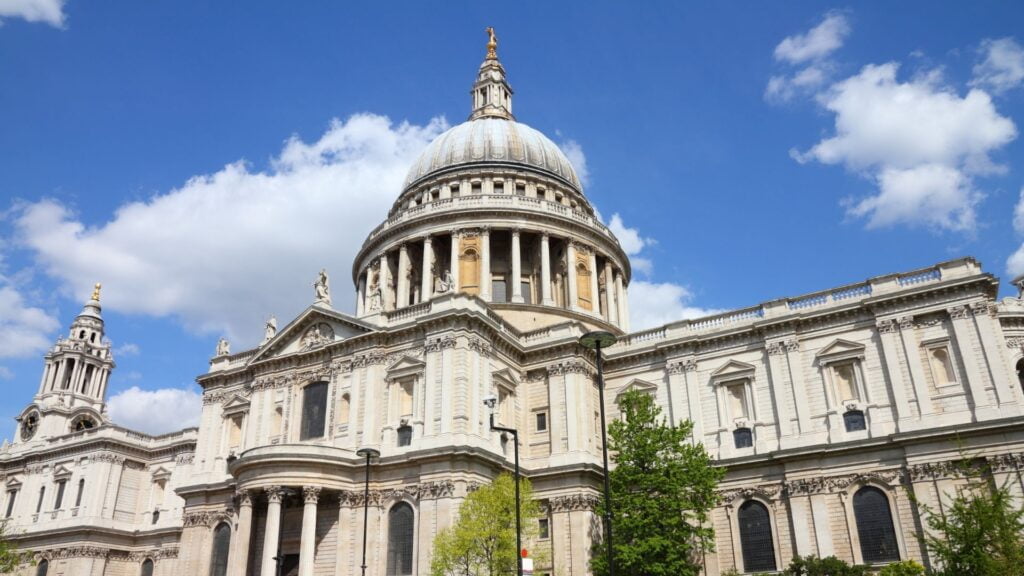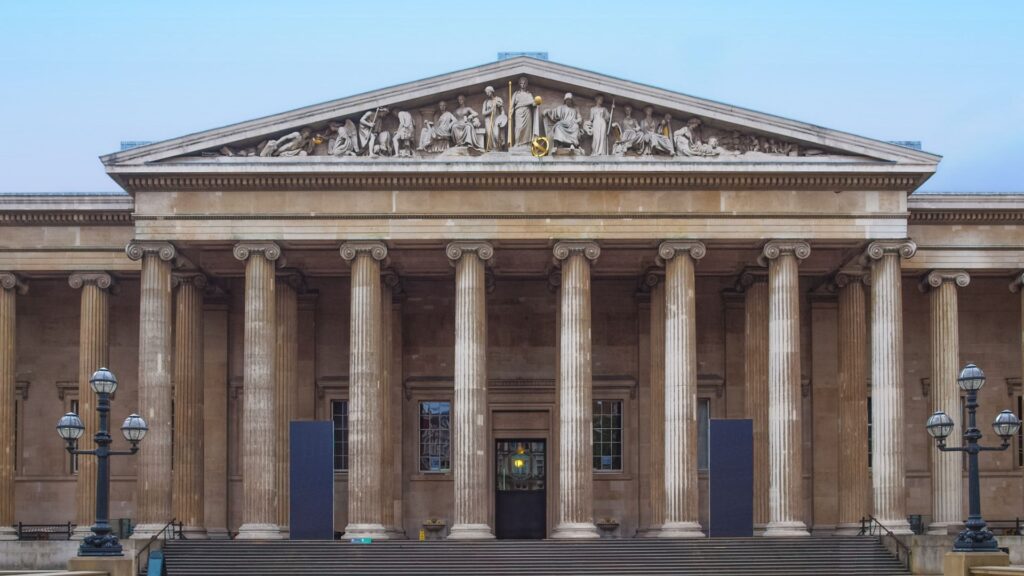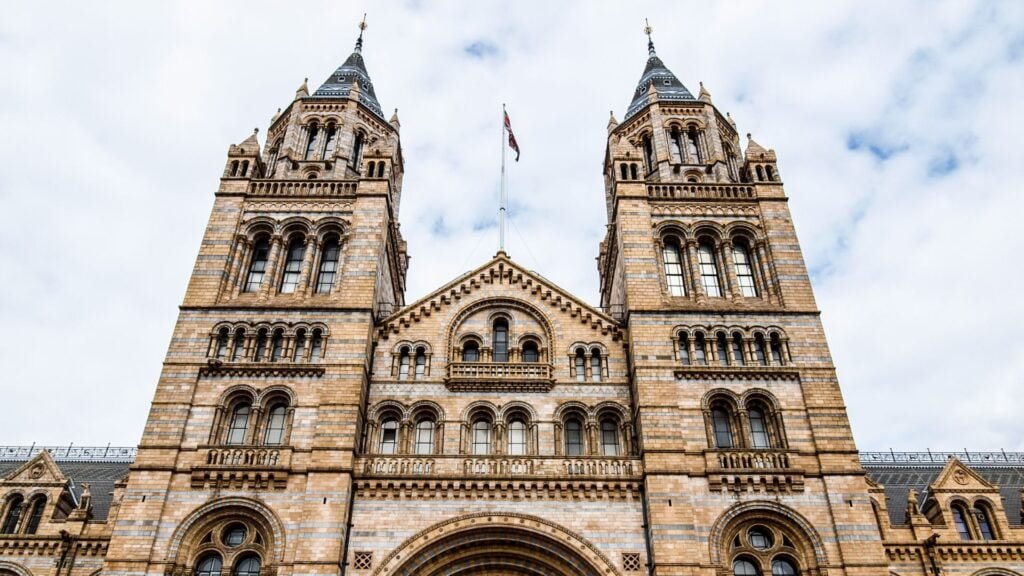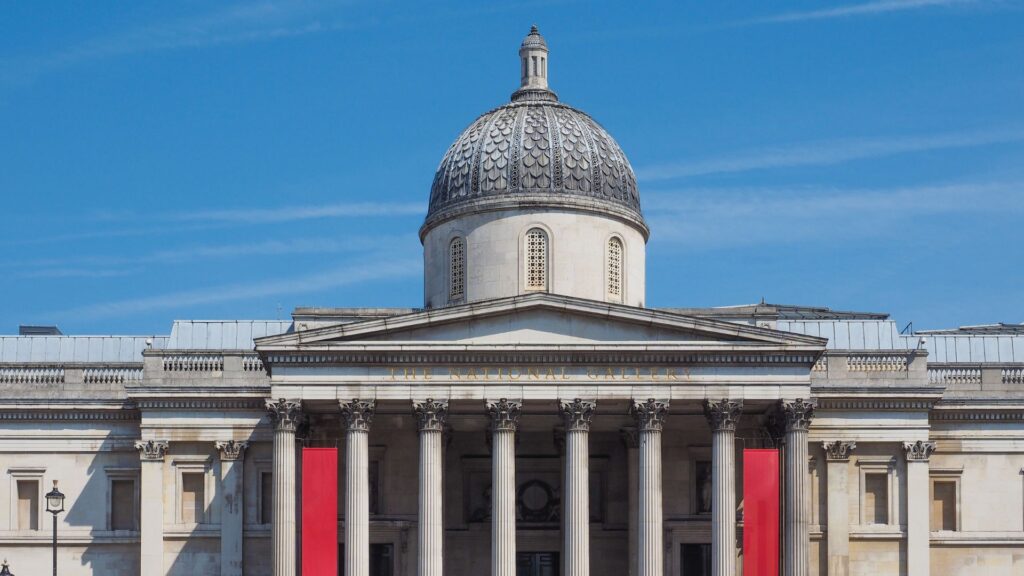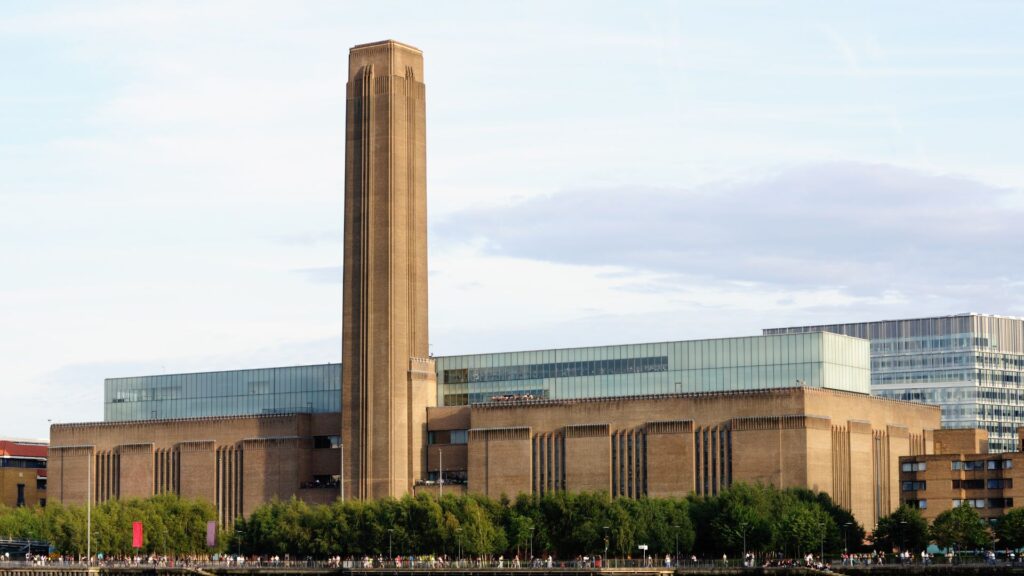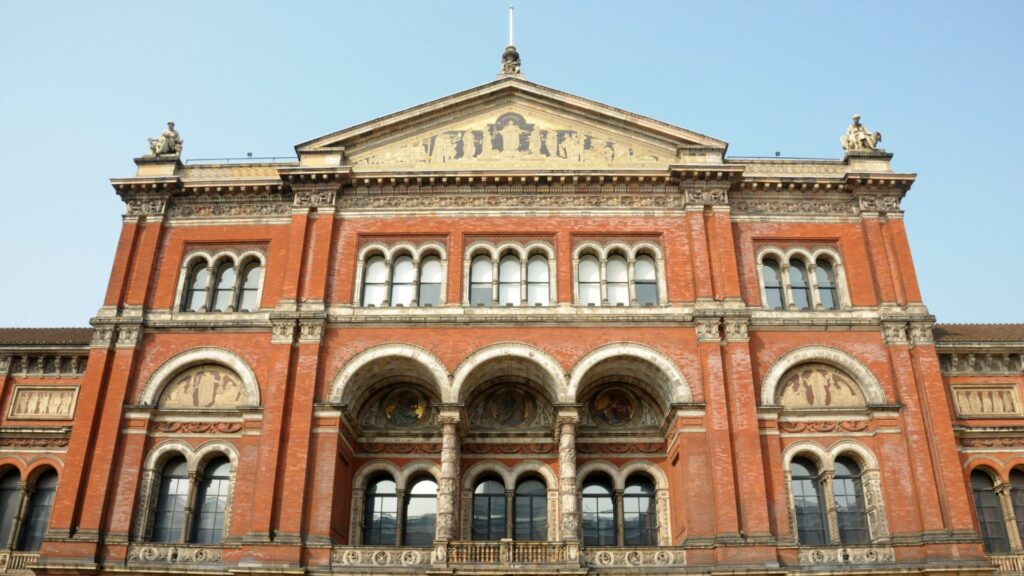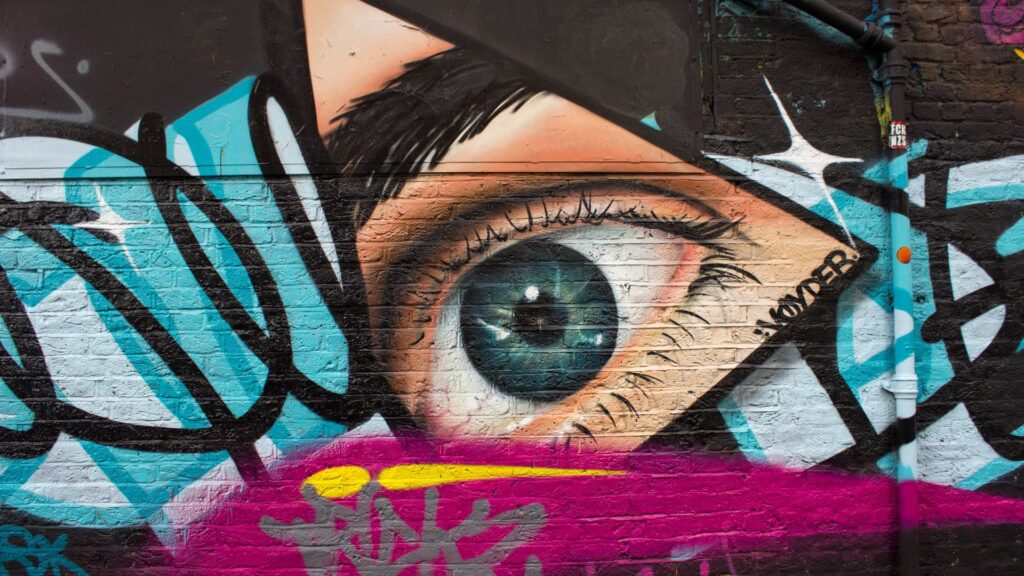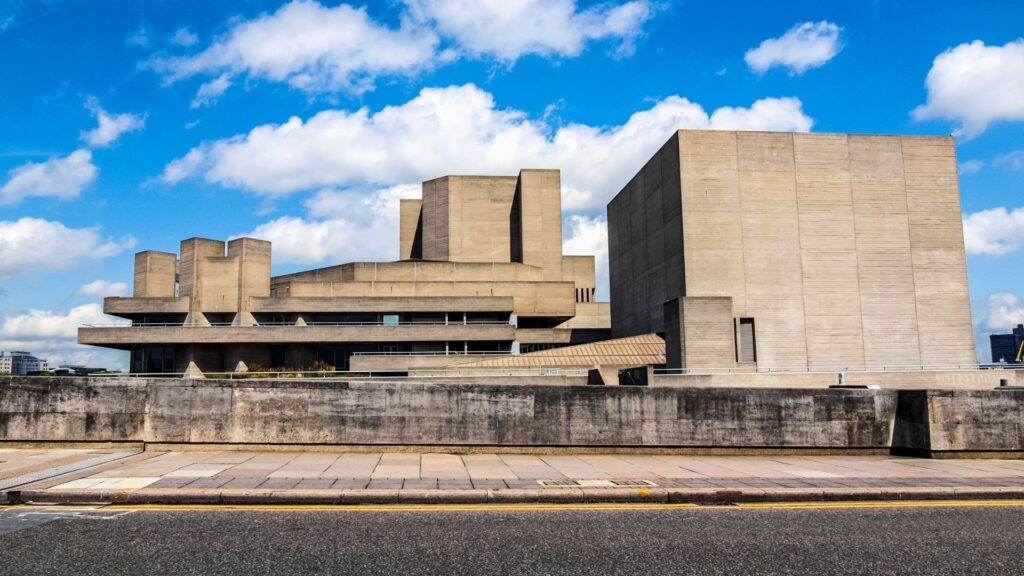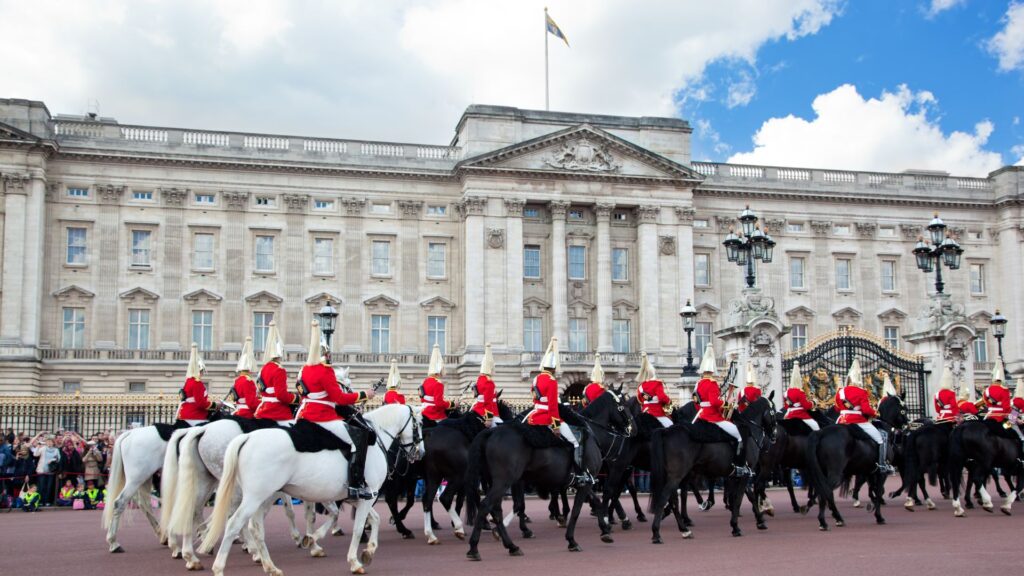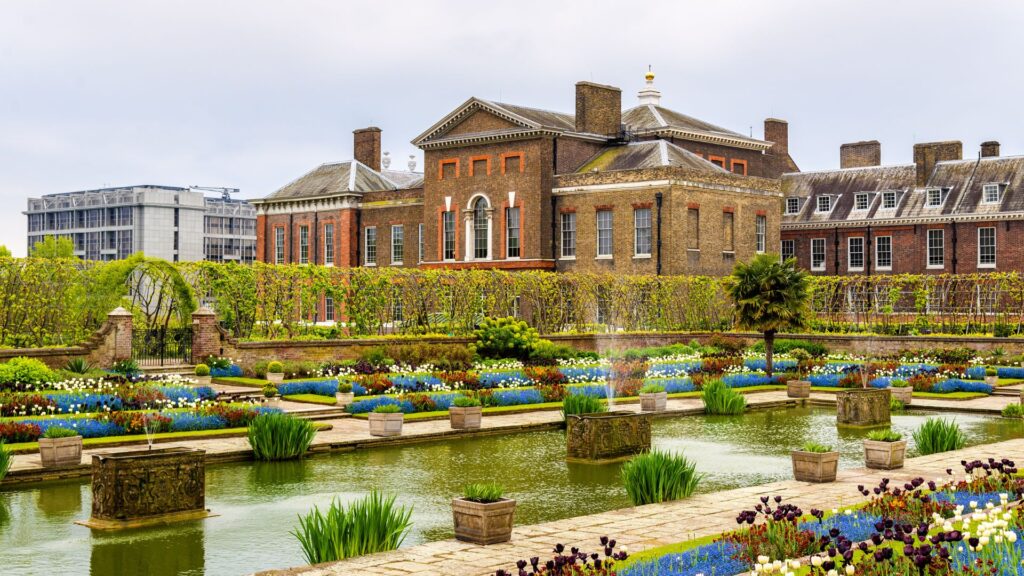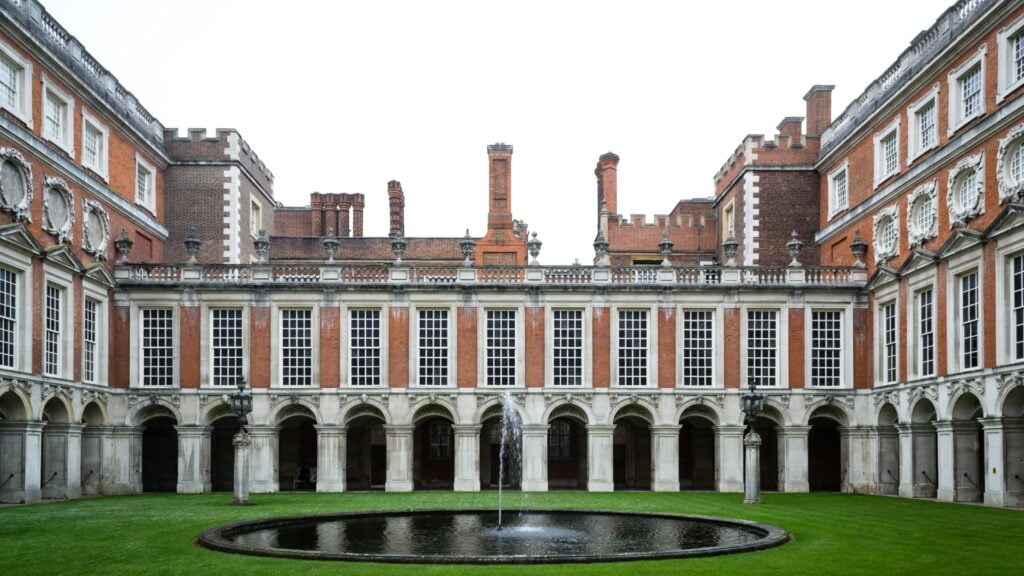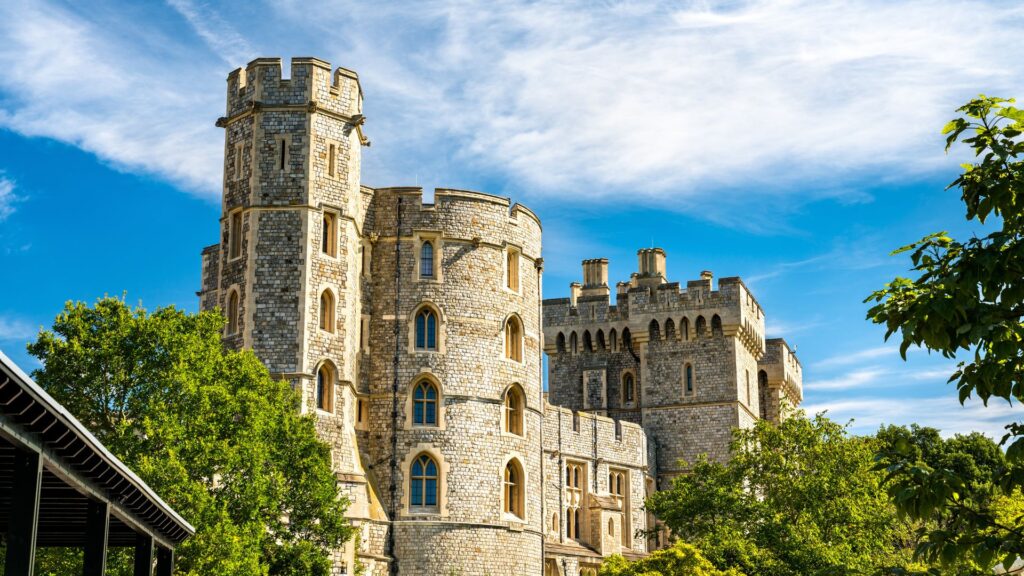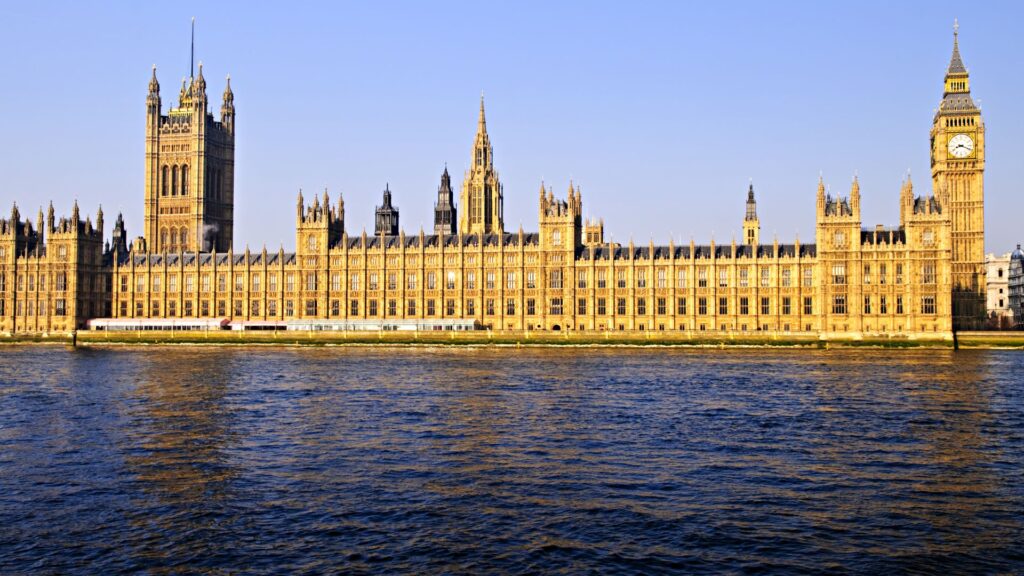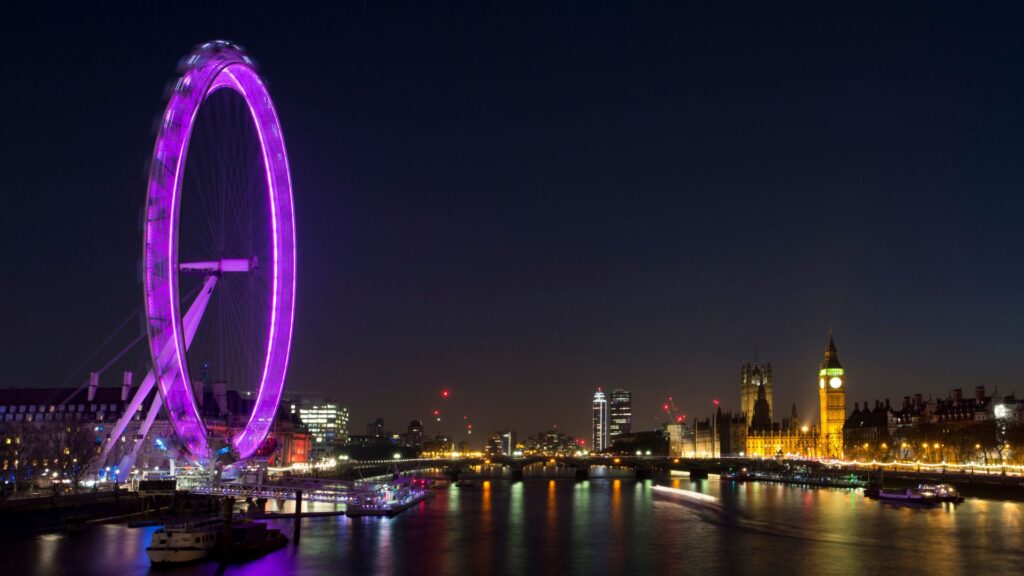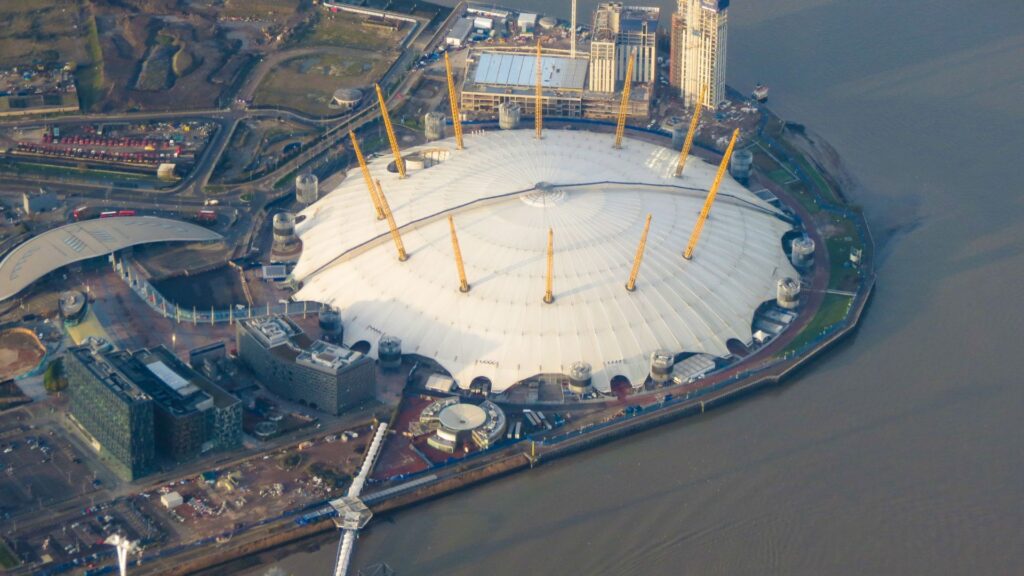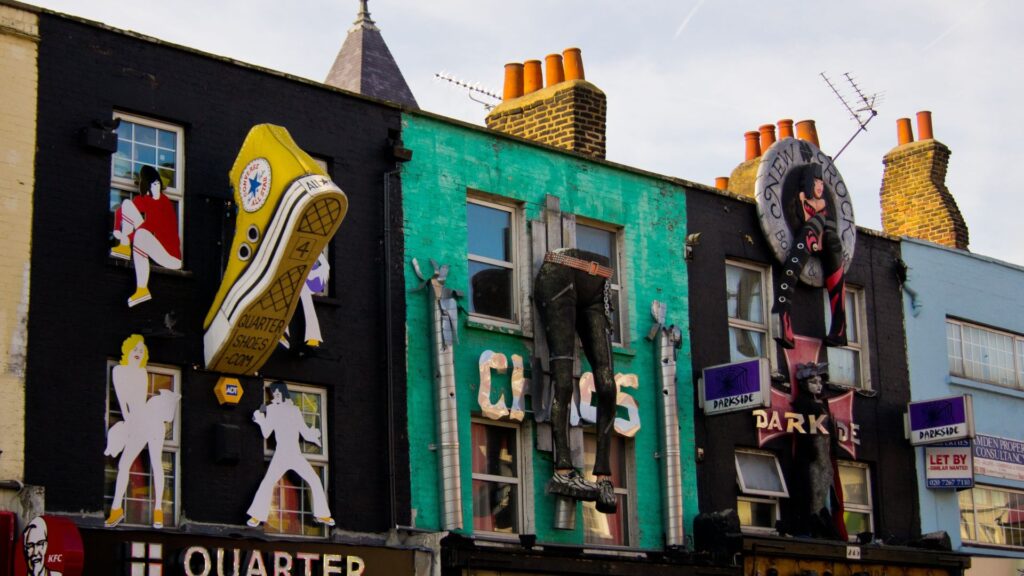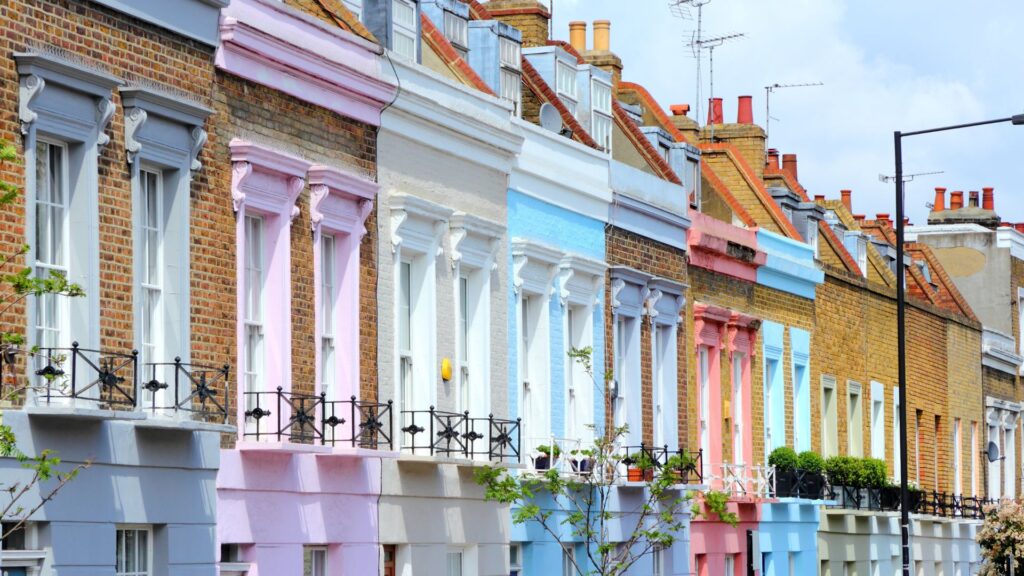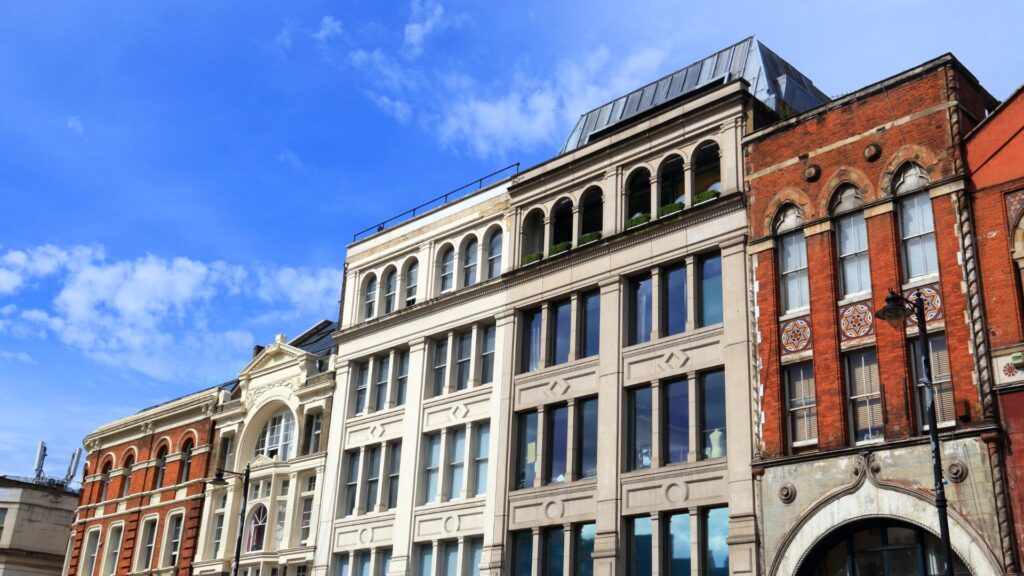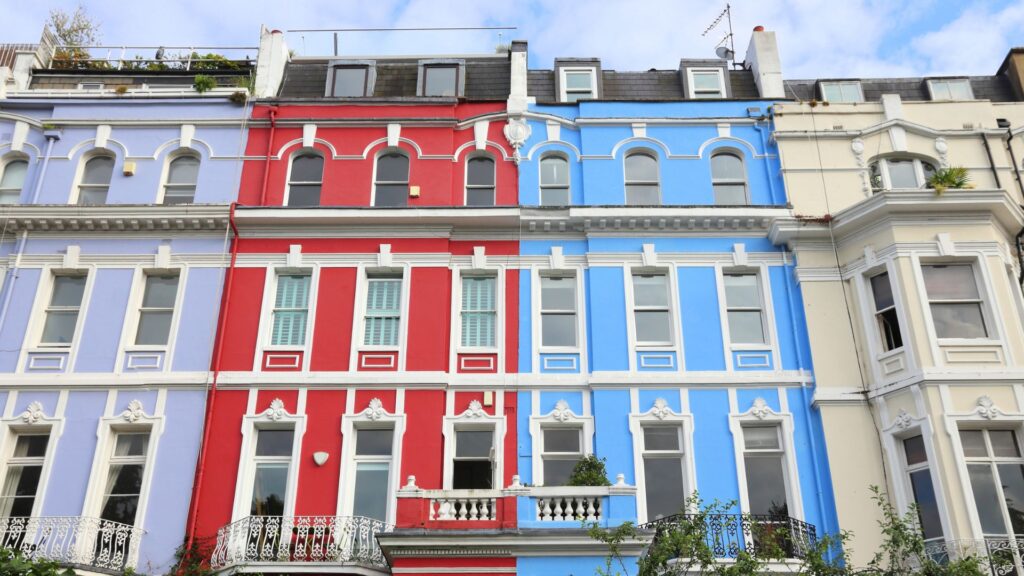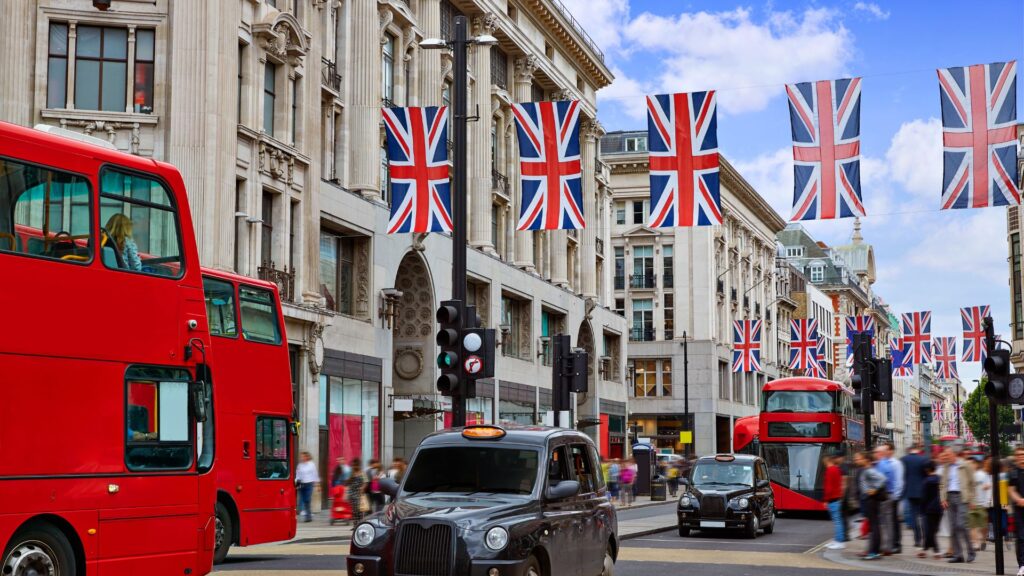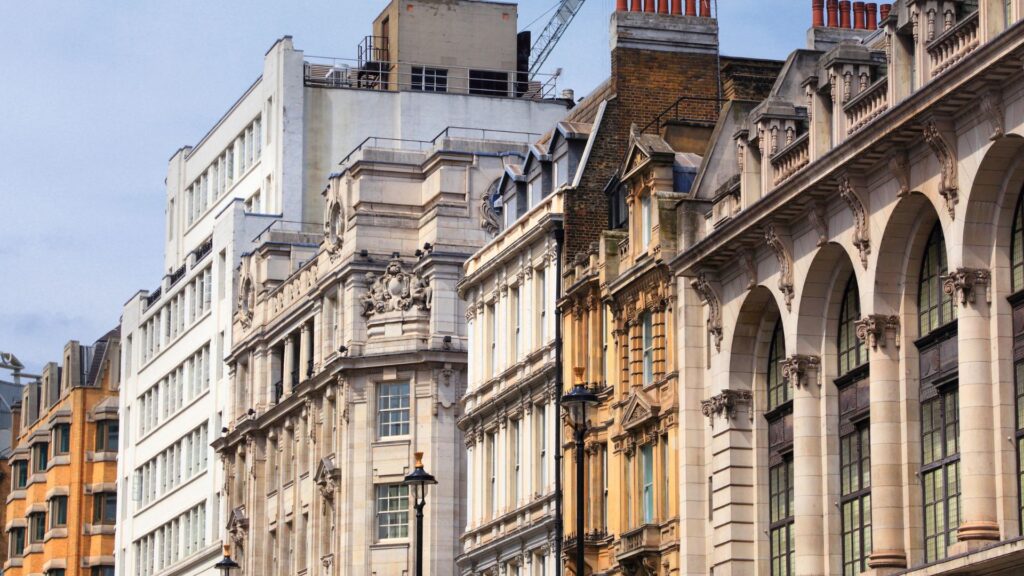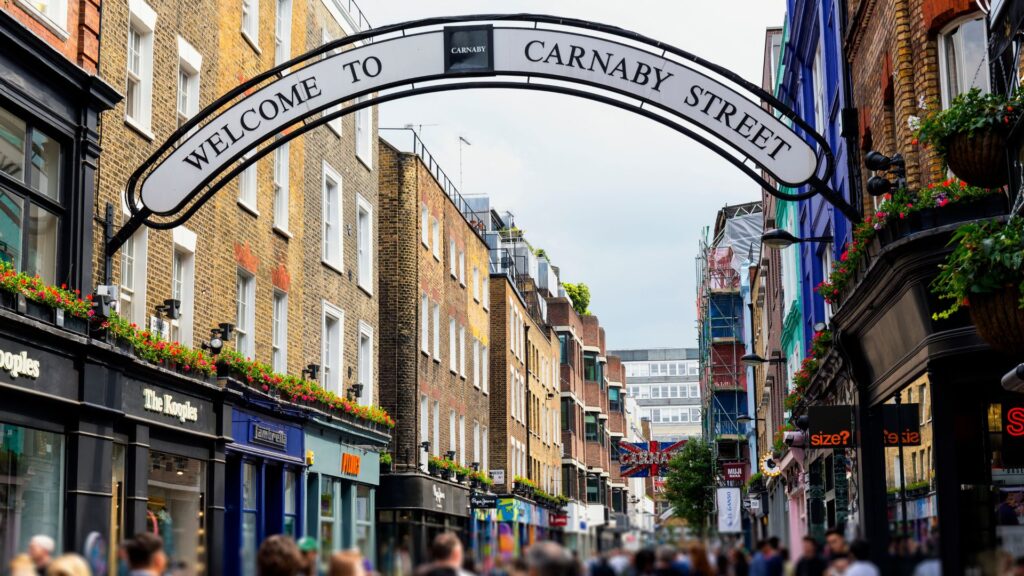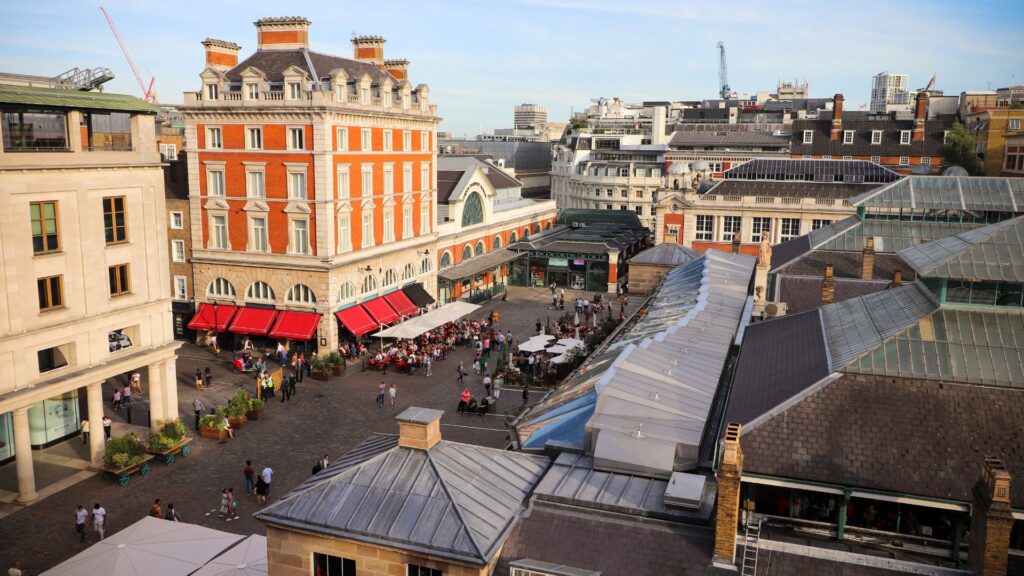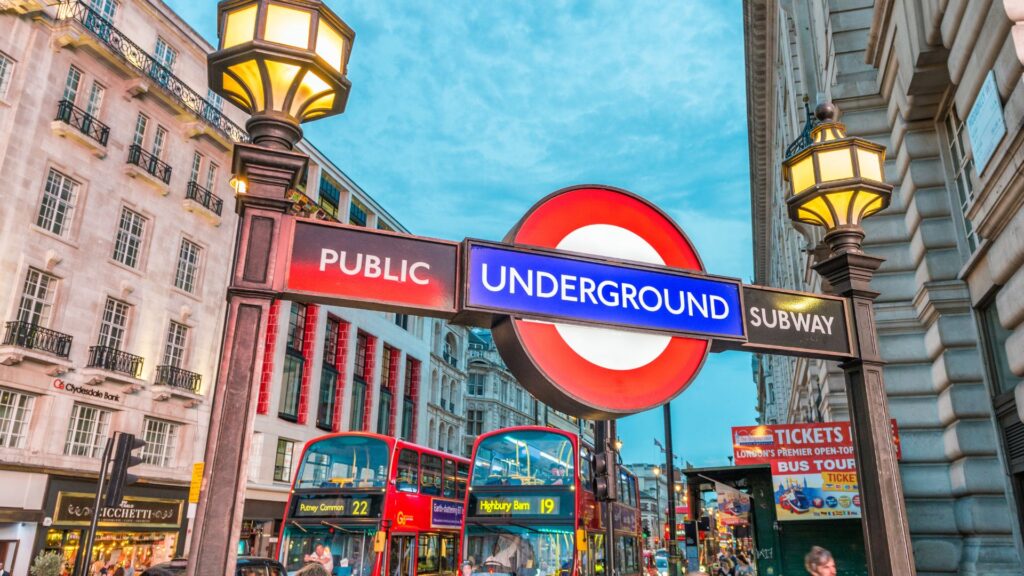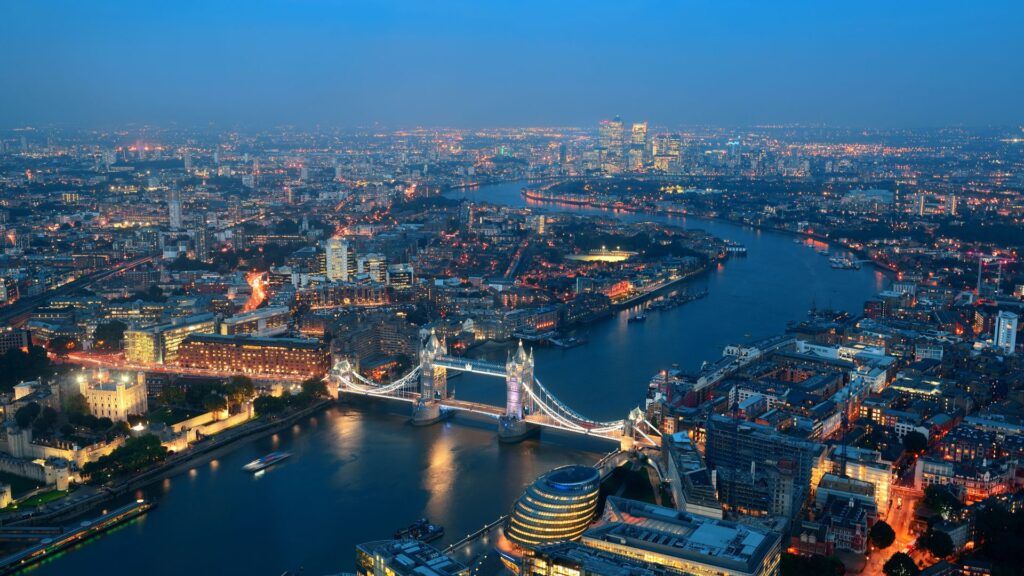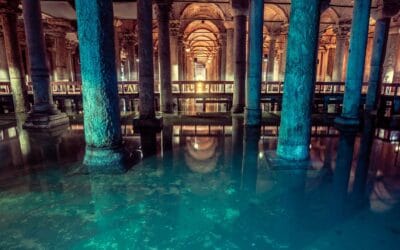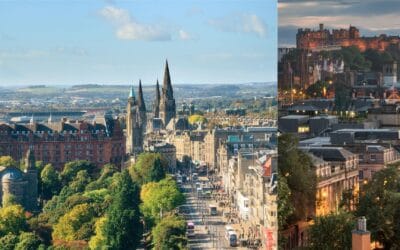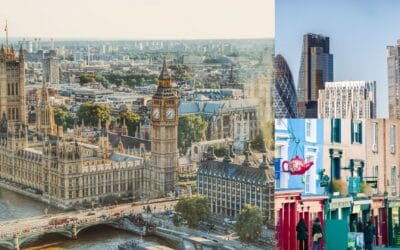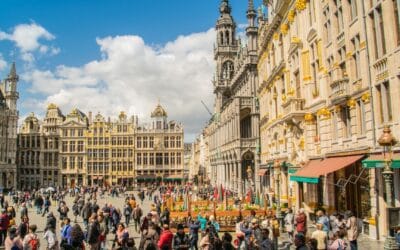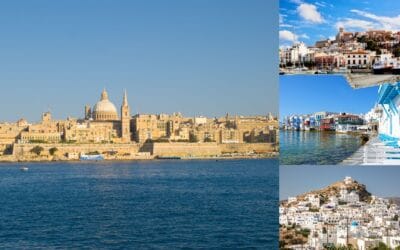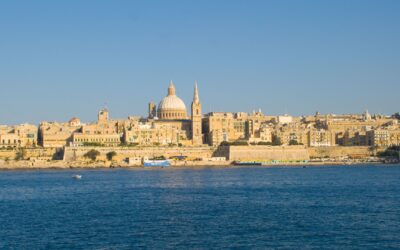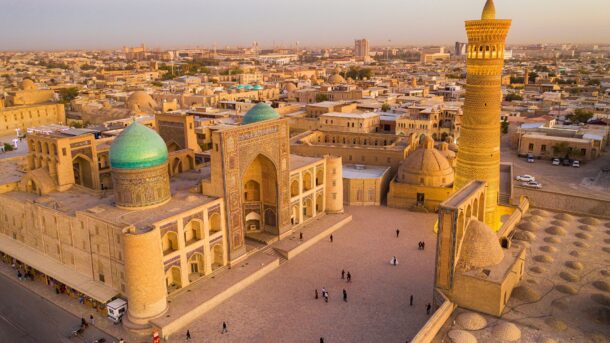London is one of the world’s most dynamic and cosmopolitan cities. It is the closest thing to New York City in Europe. It is also a cool destination for eclectic travelers, as a city of this size and influence has quite a lot of things going on. Whether you’re into royal architecture, dark medieval history, huge museums with collections from all over the planet, hipster markets, or world-famous theatres and music venues – to name a few – London is likely a place for you. Here’s a guide on things some parts of the eclectic traveler in you may want to see & do in two days of London.
Some arguably interesting things about London
To have a better understanding of the city you may be about to visit, it’s not a bad idea to learn some facts about it. For instance, did you know London started as a Roman settlement called Londinium? The event in question happened around AD 50 and the city soon became a commercial hub due to its strategic position on the River Thames.
The construction of the London Wall between 180 and 225 AD fortified the city but the fall of the Roman Empire led to Londinium becoming largely abandoned by the 5th century. Then came the Anglo-Saxon period, which was followed by the Norman Conquest in 1066. The Normans established the city as England’s political and economic center, a position that London obviously still holds today.
Roman city wall ruins of Londonium
The city went through several challenges throughout the centuries, with the Great Plague of 1665 and the Great Fire of 1666 being famous examples. Despite these events, as Britain became an empire, London unavoidably became an international center of commerce and culture. Today, the metropolis remains one of the world’s most important in financial and cultural terms. As any place that wants to call itself a global capital, London is also one of the most diverse cities in the world, with over 300 languages being spoken in the city. This means it’s the kind of place where you can really meet people from all over the world.
As you might suspect, London is big. The metropolis covers an area of approximately 1,572 sq km (607 sq mi) and has a population of over about 8,866,180. To make things simpler for you, the eclectic traveler, you can mentally divide the city into several key areas while keeping in mind that the River Thames flows through the heart of the city, dividing it into the northern and southern halves. Key districts include:
- Westminster: Home to the UK’s political institutions, including the Houses of Parliament and Big Ben.
- The City: Also known as the Square Mile, it is the historic and financial center of London.
- West End: Famous for its theatres, shopping streets like Oxford Street and Regent Street, and nightlife.
- South Bank: Known for cultural attractions such as the Tate Modern, the Globe Theatre, and the London Eye.
Now that you know all of these, it may be time to take a look at the things you can do in two days of London.
London for the history lover in you
If you like exploring cities and not just for the nightlife, chances are you are at least a little bit interested in history. Here are some of the most famous attractions that you should be able to visit even if your trip is about two days.
Big Ben, Palace of Westminster, and Westminster Abbey
If it’s your first time in London, do your best to start the exploration around the Big Ben and Westminster Abbey. Big Ben, the nickname for the Great Bell of the Clock at the north end of the Palace of Westminster, is perhaps the most famous symbol of London. As you probably know, the Palace of Westminster is the meeting place of the Parliament of the United Kingdom and, I should add, arguably one of the most beautiful buildings in the UK and Europe. Adjacent to it is Westminster Abbey, a Gothic abbey that has been the coronation church since 1066.
View of the Palace of Westminster and the Big Ben
Westminster Abbey
If you want to explore these landmarks in the company of a guide, check out these Big Ben and Westminster Abbey guided tours.
Tower Bridge
Tower Bridge is also on the list of London’s most iconic landmarks. The structure is a combined bascule and suspension bridge that crosses the River Thames. A visit to the Tower Bridge includes access to the high-level walkways with panoramic views of London, as well as views of the Victorian engine rooms, where the original steam engines are displayed. You may want to know that the bridge frequently opens to allow tall ships to pass, a show that attracts quite a few onlookers. To find out when check out this bridge lift schedule.
Tower Bridge
Tower of London
While in the area, strongly consider heading to the Tower of London, a historic castle on the north bank of the River Thames. Founded by William the Conqueror in 1066, the Tower has served as a royal palace, prison, armory, and even some sort of a zoo. Today, it houses the Crown Jewels, a collection of ceremonial regalia still used in royal ceremonies. The Tower’s sometimes gruesome history includes famous prisoners such as Anne Boleyn and Sir Walter Raleigh.
The exaggeratedly infamous Tower of London
St Paul’s Cathedral
St Paul’s Cathedral, with its iconic dome, has been a dominant feature of the London skyline for over 300 years. Designed by Sir Christopher Wren after the Great Fire of London, this building is the site of numerous events, including the wedding of Prince Charles and Lady Diana.
And this is St Paul’s Cathedral
British Museum
Now, if you want to explore one of the world’s largest repositories of human history and culture, the British Museum is the place to go. The museum was established in 1753 and, while not free of controversies given the ways in which some of its collections were obtained, many would agree it’s one of the best museums in the world, perhaps even the best. The building houses around 8 million items, including the Rosetta Stone, the Elgin Marbles, and several Egyptian mummies.
When you see this you know you’re at the British Museum
If you want to explore the museum in the company of a licensed guide, consider taking a group or private British Museum guided tour.
Natural History Museum
If you want to visit more than one museum or the British Museum is, for some incomprehensible reason, not your thing, take a look at the Natural History Museum. The grand Romanesque architecture of this museum houses displays that include dinosaur skeletons, a giant blue whale model, and an extensive mineral collection.
To explore the museum on a guided tour, consider taking the well-reviewed London Natural History Museum tour, which will take you to see Iguanodon teeth fossils, Pompeii casts, a Dodo skeleton, and a first edition of Darwin’s Origin of Species.
And when you see this you know you’re at the Natural History Museum
Science Museum
Next door to the Natural History Museum is the Science Museum, a place that offers interactive exhibits and displays that highlight the wonders of scientific discovery and technological innovation. Some of the cool things you will see there include the Apollo 10 command module and the world’s first jet engine.
Museum of London
At the beginning of this masterpiece, you’ve read a bit about London’s history. If I’ve made you curious enough to want to learn more, why not visit the Museum of London? This institution chronicles the city’s past from prehistoric times through to the present day. Highlights include exhibits on Roman London, the medieval city, the Great Fire of London, and the city’s development during the Industrial Revolution.
London for the culture enthusiast in you
You probably already know that London is a vibrant hub for all sorts of artistic products. Whether you’re interested in classical paintings, contemporary installations, or world-renowned theatre productions, London has it all. But if you’re there for a few days, you won’t be able to see them all, so here’s some intel on some arguably must-visit spots that might help you make a decision.
The National Gallery
Located in Trafalgar Square, the National Gallery is home to one of the largest collections of Western European paintings in the world. Founded in 1824, the gallery houses over 2,300 works, including masterpieces by Van Gogh, Monet, Leonardo da Vinci, and Rembrandt. The museum’s vast collection spans from the Middle Ages to the early 20th century, offering a comprehensive overview of European art history.
The National Gallery
Tate Modern
Situated on the South Bank of the Thames, Tate Modern is Britain’s national gallery of international modern and contemporary art. Housed in the former Bankside Power Station, this museum features works by artists such as Picasso, Warhol, and Hockney. The vast, industrial space of the Turbine Hall hosts large-scale installations that push the boundaries of contemporary art.
Tate Modern is housed in a rather odd building
Victoria and Albert Museum
Victoria and Albert Museum, often referred to as the V&A, is the world’s largest museum of decorative arts and design. Located in South Kensington, it houses a permanent collection of over 2.3 million objects. The museum’s diverse collections span 5,000 years of human creativity, featuring everything from fashion and textiles to sculptures and ceramics.
Victoria and Albert Museum
Street Art in Shoreditch and elsewhere
For a more alternative art experience, head to Shoreditch, an area known for its street art scene. It is one of those places in London where you can go if you want to see ever-changing murals and graffiti by both famous artists such as Banksy and emerging ones.
In case you wanted an example of street art in Shoreditch
Other parts of London in which you can find a decent amount of street art include Brick Lane, Camden, Leake Street Tunnel, Hackney Wick, and Brixton. If you don’t want to spend time searching for street art in by yourself, consider joining one of the several Londonese guided street art tours.
West End Theatre
London’s West End, often compared to New York’s Broadway, is home to shows such as the long-running musicals like “The Phantom of the Opera” and “Les Misérables”, as well as more experimental productions.
Royal Opera House
Located in Covent Garden, the Royal Opera House is one of the world’s leading opera venues. The building is home to both The Royal Opera and The Royal Ballet and it’s the place to go if you want to see classic operas, ballets, and contemporary works.
National Theatre
Situated on the South Bank, the National Theatre is another famous spot in the world of art enthusiasts. The institution provides a diverse repertoire of performances, including Shakespearean classics.
The National Theatre – an example of British modernism that may not be to everyone’s taste
London for the monarchy lover in you
The world’s most famous monarchy is in the UK and London is the epicenter of British royalty. Whether you believe monarchies still make sense today or not, you may enjoy taking a good look at some of those grand palaces and historic churches that represent, in one way or another, the country’s regal heritage.
Buckingham Palace
Some would say that no visit to London is complete without a stop at Buckingham Palace, the official residence of the British monarch. Located in the heart of the city, this palace is where you can witness the famous Changing of the Guard ceremony. The palace’s State Rooms are open to the public during the summer months, allowing you to explore the decorated rooms used for official functions and ceremonies.
Truth be told, I don’t find the Buckingham Palace to be a particularly beautiful building, especially when compared to, let’s say, the Westminster Palace. That being said, getting a few pictures with the administrative headquarters of the British monarch can be a nice experience, especially if you really are into the monarchy’s history or some of the people who currently represent it.
British Royal Guards riding on horse in front of the Buckingham Palace
If you want to visit the landmark in the company of a tour, consider checking out the available Buckingham Palace and Changing of the Guard guided tours.
Kensington Palace
Situated in the Kensington Gardens, Kensington Palace has been a royal residence since the 17th century. It was the birthplace and childhood home of Queen Victoria and is currently the official London residence of the Duke and Duchess of Cambridge. Visitors can tour the King’s and Queen’s State Apartments, as well as special exhibitions that provide insights into the lives of past and present royals.
Kensington Palace
If you want to learn more about the palace’s history while exploring it and don’t like audio guides, consider booking a Kensington Palace guided tour.
Hampton Court Palace
If you have the time and motivation, also consider going to the Hampton Court Palace. This landmark is located on the outskirts of London and it can be of particular interest to those of you interested in Tudor history. This palace was once home to King Henry VIII and is known for its architecture, gardens, and the Hampton Court Maze. The palace’s Tudor kitchens, Great Hall, and Chapel Royal are spots to get a glimpse into royal life during the 16th century.
Hampton Court Palace
While less visited compared to some other palaces in London, there are still a few Hampton Court Palace guided tours that you can check out.
Windsor Castle
Windsor Castle is said to be the oldest and largest inhabited castle in the world, having been a royal residence for over 900 years. This landmark is also located outside of London so plan accordingly if you want to take a look at it. Highlights include the State Apartments, St George’s Chapel, and the Windsor Great Park.
Windsor Castle
In case you want to visit this old castle with a tour guide, check out these Windsor Castle guided tours.
London for the adventurous spirit in you
Now, ‘adventure’ can mean different things for different people. Let’s assume that it means anything that might increase your adrenaline levels above your daily average. With this definition in mind, let’s take a look at some activities you might fancy.
Thames River cruises
One way to see most of London’s famous landmarks is by taking a Thames River cruise. You might experience the cruise as an adventure if you are afraid of being on the water. Otherwise, you might simply enjoy it despite not considering it an adventure. Consider checking out these Thames River cruise tours.
View of Westminster from the Thames River
High-speed boat tours
If you are not the biggest fan of slow cruises or are not tired of the Thames, one option to look at is a high-speed boat tour on the Thames. These rib (rigid inflatable boat) tours combine sightseeing with an exhilarating ride, as you zoom past London’s iconic landmarks at fun speeds. One of the best-reviewed tours of this kind is the Tour Through Heart of the City, which lasts for 45 minutes and where you can see sights like the Tower of London, Tower Bridge, and St. Paul’s Cathedral.
The London Dungeon
Up for diving into the darker side of London’s history? Then feel free to make a visit to the London Dungeon. This interactive attraction takes you through 1,000 years of the city’s gruesome past with a combination of live actors, special effects, and thrilling rides. From the tales of Jack the Ripper to the horrors of the plague, you might find the London Dungeon as an adventurous educational experience, or at least a fun one.
The London Eye
Afraid of heights? Then why not take a ride on the London Eye – one of London’s most iconic structures? This giant Ferris wheel on the South Bank of the Thames provides a 30-minute ride in enclosed capsules, offering panoramic views of London’s skyline. While on it, you will enjoy a bird’s-eye view of places such as Big Ben, St. Paul’s Cathedral, and Buckingham Palace.
London Eye, Westminster, and the Big Ben at night
The O2
If London Eye did little to your adrenaline levels and want to enjoy a 360-degree panoramic view, try climbing the O2. The climb will you over the arena’s roof via a tensile fabric walkway and you can choose from a daytime, twilight, or sunset climb. One guided tour you might like is the O2 Arena Rooftop Climbing Experience.
The O2 Arena
London for the hipster in you
While London is probably not the British city with the highest number of hipsters per capita, it’s still the best place to do hipster stuff. Below are some examples.
Camden Town
Camden is one of the coolest areas in London and, in my opinion, by far one of the best places to live in London. With its edgy, creative vibe, Camden has long been a hub for artists, musicians, and rebellious spirits. Camden Market is an essential stop if you are looking to dive into London’s alternative culture, as it is the place to find unique fashion, handmade crafts, vintage treasures, and an array of food stalls offering global cuisine. The atmosphere is quite electric, with live music, street performers, and a community of creatives.
Camden Town
Residential buildings in Camden
Shoreditch
Shoreditch is perhaps the heart of London’s hipster scene and, along with Camden, one of the best places in London to go out at night. The trendy neighborhood is packed with vintage shops, craft cocktail bars, and a good quantity of street art. Boxpark, a pop-up mall built from shipping containers, is the place to go for a mix of independent boutiques and eateries.
Somewhere in Shoreditch
In the same area, you will find Brick Lane, a street known for art, vintage shops, and eclectic markets. If you want to take a long look at murals and graffiti from both famous and emerging artists, Brick Lane should be on your list. It’s worth mentioning that the area is also famous for its diverse food scene, in particular the Bangladeshi cuisine, and has many trendy cafes and street food vendors.
Notting Hill
Known for its colorful houses and bohemian vibe, Notting Hill is a rather charming area. Consider visiting the famous Portobello Road Market, which stretches for over a km and consists of antiques, vintage fashion, and fresh produce. The area is also dotted with independent bookstores, quirky cafes, and art galleries.
Typical Notting Hill residential buildings
Hackney Wick
Hackney Wick is an up-and-coming area that has become a hub for artists and creatives and is part of Hackney. The neighborhood is home to numerous art studios, galleries, and street art installations. It’s a good place to discover independent cafes and craft breweries. The area has an industrial-chic vibe – think converted warehouses and canalside views.
Also located in Hackney is Broadway Market, which is open on Saturdays and offers an eclectic mix of stalls selling organic produce, artisan bread, vintage clothing, and handmade crafts.
London for the fashion lover in you
You may have heard that London is a global fashion capital. Whether you’re into high-end designer brands or vintage clothing, London’s fashion scene has something for everyone.
You may want to start your shopping experience on Oxford Street, London’s most famous shopping area, hosting over 300 shops, including flagship stores for major high-street brands. Just a short walk away is Regent Street, home to luxury brands and famous stores such as Liberty and Hamleys.
Oxford Street
Regent Street
Another option you have is in the heart of Soho and is called Carnaby Street. This is the place to go if you want to spend time in independent boutiques on a street that in the 1960s was the epicenter of the Swinging London fashion scene.
Carnaby Street
Yet another option, which we have already talked about, is Camden Market. This is the place to go if you love alternative fashion and want to buy something gothic, punk, hippy, or something in between.
If you did not find the vintage clothes of your dreams in Camden, consider spending some time in Notting Hill’s Portobello Road Market. Every Friday and Saturday, the market comes alive with stalls selling everything from retro fashion to antique jewelry.
Then there’s Spitalfields Market, a place also known for vintage clothing, handmade accessories, and cutting-edge fashion from emerging designers.
And if you like handmade things, try Apple Market, in Covent Garden, which sells handmade crafts and antiques.
Covent Garden
Finally, there is King’s Road, which in the 1960s and 70s was the center of the mod and punk scenes and today it’s lined with shops offering everything from luxury brands to chic homeware.
London for the party lover in you
In case you didn’t know London’s nightlife is as diverse and dynamic as the city itself. It is the place to go if you want to experience the British unique pub culture and/or dance in some of the world’s most famous clubs.
The most well-known nightlife hotspots in the city are Soho, Camden, Shoreditch, Leicester Square, and Piccadilly Circus. Soho is harder to define while Camden and Shoreditch are particularly known for their alternative vibe. If you want to spend some time in a theatre or a cinema, Leicester Square is the place to go. Finally, if you prefer your nightlife to include neon signs, then go to Piccadilly Circus.
Piccadilly Circus
Pretty aerial view of London at night
If pub crawls are your thing, you will be glad to know that there’s at least one for each of London’s main nightlife districts. If you want to party in Soho, consider joining the Guided Bar & Club Crawl. If you would rather spend some quality nighttime in Camden, then perhaps you should take the Camden Pub Crawl & Bar Tour London. And if Shoreditch is your thing, you have the Original Shoreditch Pub Crawl as an option to consider.
While each district has its own vibe, I recommend reviewing the itinerary and the feedback given by other travelers before deciding where you want to crawl. And if you’re going to spend an entire weekend in London, you may well want to choose a different thing each night.
Best areas to stay in London
In case there are any doubts, London is huge. For this reason, you will typically want to stay as close to the main attractions as possible. Here are some of the arguably best neighborhoods to consider, each with its own distinct personality and charm.
Covent Garden
It’s a perfect choice if you want to be in the heart of the action.
Pros:
- Lively atmosphere with plenty of restaurants, bars, and shops.
- Great transport links, including several Tube stations and bus routes.
- Close to major tourist attractions.
Cons:
- Can be very crowded, especially during weekends and holidays.
- Accommodation tends to be on the pricier side due to its central location.
Shoreditch
Shoreditch is an ideal area for those looking to experience London’s edgy side.
Pros:
- Vibrant nightlife with a mix of traditional pubs, trendy bars, and clubs.
- Rich in street art and home to numerous galleries and creative spaces.
Cons:
- Can be noisy, especially at night.
- Some parts of the area can feel a bit gritty
Camden
Camden is a lively area that’s perfect for those who enjoy some bohemian vibes.
Pros:
- Lots of live music venues and alternative markets.
- Good nightlife with a variety of pubs, clubs, and music venues.
Cons:
- Can be very busy, particularly around Camden Market.
Notting Hill
Notting Hill offers a village-like feel within the city.
Pros:
- Picturesque streets
- Quieter and more residential compared to central London, which is a pro if you want to sleep well and your room has poor insulation.
Cons:
- Can be touristy, particularly on weekends and during the summer.
- Accommodation can be expensive
London public transportation
Navigating London is made easy with its extensive and efficient public transportation system. The London Underground, commonly known as “The Tube,” is one of the most efficient and extensive metro systems in the world. With 11 lines and 270 stations, it covers most areas of London, making it the most convenient option for getting around.
Tips for using the Tube:
- Oyster Cards and Contactless Payment: The most convenient way to pay for travel on the Tube is with an Oyster card or a contactless payment card. These methods offer cheaper fares compared to single paper tickets. Oyster cards cost £5 ($6.40, €5.80) and can be topped up as needed. Daily fare caps ensure you don’t spend more than a set amount, making travel cost-effective. For example, the daily cap for Zones 1-2 is £8.50 ($10.90, €9.80), and for Zones 1-6 it is £15.60 ($20, €18)
- Peak and Off-Peak Times: Peak fares apply Monday to Friday from 06:30-09:30 and 16:00-19:00. Traveling outside these times will be cheaper, as off-peak fares apply at all other times, including weekends and public holidays.
- Night Tube: On weekends, certain underground lines offer continuous night service. The Night Tube runs from approximately 00:30 to 05:30 in the morning. The lines that operate this extended service include the Central, Jubilee, Northern, Piccadilly, and Victoria lines, along with parts of the London Overground.
- Travelcards: If you plan to use the Tube extensively, consider a Travelcard. A one-day Travelcard for Zones 1-6 costs £15.90 ($20.50, €18.30) for unlimited travel. Weekly, monthly, and annual Travelcards are also available for longer stays.
London’s iconic red double-decker buses are the best way to see the city while using public transportation way to see the city. Some lines cover areas that the Tube doesn’t.
Tips for using buses:
- Payment: Buses are cashless, so you’ll need an Oyster card or a contactless payment card. A single journey costs £1.75 ($2.25, €2), and there is a daily cap of £5.25 ($6.75, €6) for unlimited bus travel.
- Routes: Numerous bus routes operate 24 hours a day. Popular routes for sightseeing include the 9, 11, and 15, which pass many key attractions .
- Bus Stops: Check the bus stop signs for route numbers and destinations. Real-time information is often available at stops and via apps.
Then there’s London’s river transport system, operated by Uber Boat by Thames Clippers.
Tips for using river transport:
- Routes and Fares: The Thames Clippers operate several routes, connecting major piers from Putney in the west to Woolwich in the east. Adult fares for central zones are £9.00 ($11.50, €10.40), with discounts available for Oyster card and Travelcard holders.
- Tickets and Payment: You can use an Oyster card, contactless payment, or purchase tickets online or at the pier. Daily fare caps apply when using Oyster or contactless payment methods.
- Schedule: Services run regularly throughout the day, with extended hours during peak tourist seasons.
Best time to visit London
How you’ll experience London may to some extent depend on the season. If you decide to visit the city during spring or autumn, expect fewer tourists, and cheaper accommodation, but quite a lot of rain. In winter, expect even fewer tourists (outside the holiday season) and temperatures averaging between 2°C and 6°C (36°F to 43°F).
To many, London is best to visit between May and October, as it is during this time that the city is the warmest, has the least rain, and has a substantial number of outdoor events. That being said, the warmest season is also when you can expect the largest crowds and highest prices.
A few things to know about the UK before you visit London
Most people know about the British Tea and the British Monarchy but did you know the following?
1. The currency in the UK is the British Pound (£). As you might suspect, credit and debit cards are widely accepted, and contactless payment is common.
2. UK power sockets are different from those in many other countries. They use a unique three-pin plug, and the voltage is 230V. Make sure to bring an adapter if your devices use a different plug type. Note that you won’t find power sockets in UK bathrooms due to safety regulations.
3. In the UK, people drive on the left side of the road.
Useful information, right?
Your next city break after leaving London
After exploring the vibrant and diverse city of London, you might be ready for your next city break. One nearby option is Edinburgh, the capital of Scotland. This city is remarked by its historical and, I would say, rather spooky architecture and the famous Edinburgh Castle, which sits atop an extinct volcano. The pretty Scottish city is just over four hours by train from London.
If you would rather go somewhere on the continent, then why not go to one of London’s main competitors? Paris, as you probably remember, is that place where you can find the Eiffel Tower, the Louvre Museum, and the Notre-Dame Cathedral, among others. You can reach Paris in just over two hours by Eurostar train.
If you’re not feeling in the mood to visit Paris but want something somewhat close in vibe, Brussels is your option. The city has tasty chocolate and beer, some medieval charm, and a beautiful square known as the Grand Place. The city is just under two hours from London by a Eurostar train.
Finally, there’s Amsterdam, another city that is four hours from London on a Eurostar train. Smaller than London and Paris and arguably much cooler than Brussels, the capital of the Netherlands is a place where you can enjoy picturesque canals and visit the Anne Frank House, the Rijksmuseum, and the Van Gogh Museum, to name a few. Check out our guide on how to spend an Amsterdam weekend that matches your vibe.
Bottom line: London is one of the world’s capitals
Whether we’re speaking of cultural or economic influence, it is reasonable to say that London is one of the world’s capitals. For you, the eclectic traveler, London is a giant playground. In just two days, you can go from snapping selfies at Big Ben to hunting down Banksy murals in Shoreditch. One minute you’re touring royal palaces like a proper aristocrat, and the next you’re getting lost in Camden’s hipster markets, trying to decide if you need a vintage jacket. In other words, London has many vibes and many looks.
Fancy a high-speed boat ride on the Thames? Check. Want to climb The O2 and pretend you’re an urban explorer? Absolutely. London’s the kind of place that lets you wear your crown one minute and your grungiest thrift shop find the next. With so much to see, you’ll leave wishing you had another day (or five), but hey, two days are enough to get a taste of why London is a world capital for the cool, the curious, and the totally eclectic.

